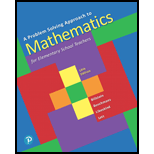
(a)
To find:
The total number of possible outcomes when a coin is flipped twice.
(b)
To find:
The total number of possible outcomes when a coin is flipped three times.
(c)
To find:
The total number of possible outcomes when a coin is flipped four times.
(d)
To find:
The total number of possible outcomes when a coin is flipped then a die is rolled.
(e)
To find:
The total number of possible outcomes when two dice are rolled.
(f)
To find:
The total number of possible outcomes when two coins are flipped, then a die is rolled.
(g)
To find:
The total number of possible outcomes when a coin is flipped, then a card is drawn.
(h)
To find:
The total number of possible outcomes when a die is rolled, then a card is drawn.
(i)
To find:
The total number of possible outcomes when a coin is flipped, then a die is rolled and then a card is drawn.
(j)
To find:
The total number of possible outcomes when two cards are drawn with replacement.
(k)
To find:
The total number of possible outcomes when two cards are drawn without replacement.
Want to see the full answer?
Check out a sample textbook solution
Chapter 9 Solutions
A Problem Solving Approach To Mathematics For Elementary School Teachers (13th Edition)
- Select the polynomials below that can be solved using Completing the Square as written. 6m² +12m 8 = 0 Oh²-22x 7 x²+4x-10= 0 x² + 11x 11x 4 = 0arrow_forwardProve that the usual toplogy is firast countble or hot and second countble. ①let cofinte toplogy onx show that Sivast countble or hot and second firast. 3) let (x,d) be matricspace show that is first and second countble. 6 Show that Indiscret toplogy is firstand Second op countble or not.arrow_forwardH.W For any events A and B, show that 1. P(AB)s P(A)≤ P(AUB)≤ P(A) + P(B)arrow_forward
- a) Find the scalars p, q, r, s, k1, and k2. b) Is there a different linearly independent eigenvector associated to either k1 or k2? If yes,find it. If no, briefly explain.arrow_forwardPlz no chatgpt answer Plz Will upvotearrow_forward1/ Solve the following: 1 x + X + cos(3X) -75 -1 2 2 (5+1) e 5² + 5 + 1 3 L -1 1 5² (5²+1) 1 5(5-5)arrow_forward
 Discrete Mathematics and Its Applications ( 8th I...MathISBN:9781259676512Author:Kenneth H RosenPublisher:McGraw-Hill Education
Discrete Mathematics and Its Applications ( 8th I...MathISBN:9781259676512Author:Kenneth H RosenPublisher:McGraw-Hill Education Mathematics for Elementary Teachers with Activiti...MathISBN:9780134392790Author:Beckmann, SybillaPublisher:PEARSON
Mathematics for Elementary Teachers with Activiti...MathISBN:9780134392790Author:Beckmann, SybillaPublisher:PEARSON
 Thinking Mathematically (7th Edition)MathISBN:9780134683713Author:Robert F. BlitzerPublisher:PEARSON
Thinking Mathematically (7th Edition)MathISBN:9780134683713Author:Robert F. BlitzerPublisher:PEARSON Discrete Mathematics With ApplicationsMathISBN:9781337694193Author:EPP, Susanna S.Publisher:Cengage Learning,
Discrete Mathematics With ApplicationsMathISBN:9781337694193Author:EPP, Susanna S.Publisher:Cengage Learning, Pathways To Math Literacy (looseleaf)MathISBN:9781259985607Author:David Sobecki Professor, Brian A. MercerPublisher:McGraw-Hill Education
Pathways To Math Literacy (looseleaf)MathISBN:9781259985607Author:David Sobecki Professor, Brian A. MercerPublisher:McGraw-Hill Education





